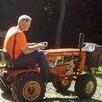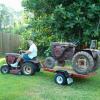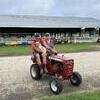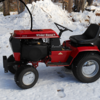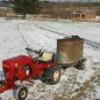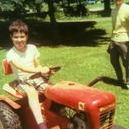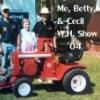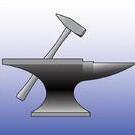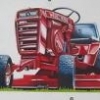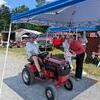Leaderboard
-
in all areas
- All areas
- Markers
- Marker Comments
- Marker Reviews
- Articles
- Article Comments
- Article Reviews
- Classfieds
- Classified Comments
- Classified Reviews
- Wiki's
- Wiki Comments
- Wiki Reviews
- Blog Entries
- Blog Comments
- Images
- Image Comments
- Image Reviews
- Albums
- Album Comments
- Album Reviews
- Files
- File Comments
- File Reviews
- Posts
-
Today
-
All time
November 28 2011 - January 3 2026
-
Year
January 3 2025 - January 3 2026
-
Month
December 3 2025 - January 3 2026
-
Week
December 27 2025 - January 3 2026
-
Today
January 3 2026
- Custom Date
-
All time
Popular Content
Showing content with the highest reputation on 01/03/2026 in all areas
-
11 pointsDid something crazy today! Drove 735 miles from Andover Ct to Shippensburg Pa (round trip) took me 13 hours and 10 minutes, spending $130.24 on fuel…to come home with a C-145 Hydro. My wife packed me a lunch, snacks and a couple waters so I only had to purchase a coffee. Left my house at 5:30am and pulled back into my driveway at 6:40pm. Was supposed to be a clear day…hardly! Hit snow on I84 west headed to Scranton Pa, and hit it again on the way home . But no hiccups or truck issues so I’ll say it was a win!
-
8 pointsDon't want to jinx anyone here in Maine but have not seen piles of snow here this high in a few years. This was cleaned up with multiple machines. Good ole time Maine Wintah.
-
6 pointsOld black hoods, I call them rattle hoods, I think are some of the best machines WH made. The C series with larger rear axles and the big Kohler engines, pound for pound, just plain tough. I guess my question, at what point in the trip did you say "what am I doing?" I know I have been there! Every tractor has a story and my C145, that still have, is a good one. About an hour trip to pick up. Myself and a friend went to look and buy a c145 that lived it's life moving boats. It was at the owners home and went to take a look. It ran great, but had the old plastic seat pan broken and it was weathered a bit. Did a little negotiating and was at a stalemate. Real close tho. It was a hot evening and I noticed the guy had just came back with a box of long-necks and put them on the porch when we show up. I told him to throw in a couple of the beers and he has a deal. Oh he was real happy. went down and put the case in the yard and we had us a couple. My friend told me we need to go or we are staying. So we got another tractor and made a friend. Picture from a 50/50 redo.
-
6 points
-
5 points
-
5 pointsThe easiest repair method in that location is fiberglass as @ineedanother describes. But, if you have sandy soil like I do, a fiberglass patch is probably a temporary patch, due to the sand blasting action while the mower runs. Being a retired press & die engineer, I'd get out a ball peen hammer and a log with a shallow depression in the end and try to beat out a reasonable facsimile patch panel. Might be easier to match the contour with a 2 or 3 piece patch. I've got some patch work to do on my decks, so that was more of a pep talk to myself.....
-
5 pointsMany do not realize the importance of fresh supple fuel hoses. The rubber must be soft enough to grip the hose nipples. What happens is the pump suction will pull a bubble of air between the hose and the nipple and then it expands that air bubble to a teaspoon full size with each vacuum stroke and not having duration enough to pull fuel with it before the next stroke happens. They will allow air to get sucked in but not leak fuel out so does not get noticed. That is why fresh fuel hose often fixes a fuel starvation problem or an electric pump installed at the tank works. The fuel between the pump and the carb is never under a vacuum so air is never drawn in.
-
5 pointsIf your gonna get a borescope, Get one with the wiggle end https://depstech.com/collections/video-endoscopes/products/ds630-two-way-articulating-borescope Fast forward about 13 minutes.
-
4 pointsCongrats !!!!!!!!! ---- Really like the black hood C series - have two of the c175s --- and now trying to save a C165 which grandson and I rescued but likely needs engine rebuild --- have been looking for a C145 for few yrs - - hard to find - prefer the H model -- drove 3 hrs to see one in Pennsylvania 2 yrs ago expecting to bring it home, only to find when i got there a frame crack in the frame plate connection to the tranny -- decided not to take it - probably would have been worth the time and cost to repair the crack.
-
4 pointsJanuary 3. 1938, U.S. President Franklin D. Roosevelt established the National Foundation of Infantile Paralysis (later called the March of Dimes) to find a cure for polio, a disease he had been stricken with in 1921.
-
4 points
-
4 points
-
4 points
-
4 pointsController, Alltrax AC2, was little bigger than I was expecting but got it mounted
-
4 points
-
4 pointsI started using that several years ago because I could see the fuel through the line. I like that quite a lot. Problem is, it was going stiff and needing to be replaced after about 2 to 3 seasons. A year or two ago I switched over to the one my local small engine shop recommends and uses. Actual Briggs & Stratton part number. I am now buying that in bulk. Bill's Place may be the cheapest one. Not sure. The part number is, 395051r. That's a 25-ft roll. What I like about this stuff over the regular rubber is, it's quite a bit more flexible. A lot easier to use. Does not kink on sharp corners anywhere near as badly.
-
4 pointsI had to drive from The Geneva NY thruway exit to the GM training school that was in Depew (Buffalo) in an 85 Toyota PU with the 5spd 4 Popper. Just as you merge onto the main highway you're going up hill so I'm winding it up pretty good to get to 65 MPH. There is a bridge partway up and it's a cold morning. I got on that bridge and the truck changed lanes in a blink of an eye. Every bridge I went over after that I felt the back end starting to switch lanes until I figured out to coast over everyone. Made for an interesting trip.
-
4 pointsMost of us use 1/4" rubber fuel hose available at ant auto parts store, get some new clamps and a fuel filter while you are there,
-
4 pointsHAHA! When I woke up and it was 16 degrees out…and again in the first mile as my truck was creaking and groaning and I was wearing gloves so the cold steering wheel wouldnt suck all the heat outa me . And again near Scranton PA in a snow squall that was sticking to the roads going up a hill and the rear tires broke loose and traction control kicked on going over a bridge..apparently the bridges DO FREEZE before the roadways!
-
4 pointsI was about to ask what the supporter meant. As soon as Christmas bills roll in, I'll see what I can do. Money is tight. Not airin' dirty laundry but by God's grace I just kicked inop stage 3 cancers' butt. You can imagine the costs I'm sure. My wife has been diagnosed with inop stage 4 cancer & she's not doin' well. Not responding to treatments. They said 4-12 months without treatments. I got the 312-8 to get me outside and help get my head on something positive.
-
4 pointsGood to know. One area of wear & friction is where the steering shaft engages the lower steering block. The underside of the pinion gear wears into the top of the block; the gear mesh into the fan gear pushes them apart wearing both the shaft and block bore. The bottom end of the shaft received six shallow grooves to retain grease. I address this by flycutting the worn top surface smooth & flat again, then drilling & reaming the upper bore to accept a thin-walled bronze bushing. Once installed I drill thru the wall at the grease fitting. I use a thin - .015 or so - steel shim between the cast block & the steel gear. Grease fitting... I also add one to the lower portion of the block where the lower steering shaft lives. No bushing in the lower, I added one on the shaft...The 502 I did now has one-finger steering...
-
4 pointsThe damaged area is much larger than it appears on the outside. Once you grind that surface to expose good parent metal to weld to, you will be amazed how much is gone. Folks here have used either metal or fiberglass cloth & resin for that type of repair with acceptable results. Third choice is a replacement shell...
-
4 pointsDon't know what this one is ... and I ain't gonna go out to the barn & measure ...in my jammies and too cold out...
-
4 points
-
4 pointsGlad you made it home safely Mike. Now you know the rules, we are going to need plenty of pictures of that tractor once you get it off loaded. But judging from the pictures so far it looks like you got yourself a nice tractor! 👍🏻
-
3 pointsUpdate: It’s a 1984 and has the original/correct Kohler 14 under the hood. Hubcaps are off and undergoing a cleaning (they will be up for sale soon). It’s nice to buy a tractor that has no rips in the seat, a battery that’s still good after you get it home, tires that aren’t flat after you get home, working head and tail lights (LED tail lights ) Wheels will definitely need to be cleaned up and painted.
-
3 pointsI'm a fan of a wider track width. Better stability. IMHO looks better too. Was it me I'd get spacers for behind the wheel as mentioned above. Can you cut the spindles? Sure.....
-
3 pointsI put a couple of washers and a 3/4" collar on the back side of the rims of my 1971 Raider. I used some new rims with a 3" wide hub.
-
3 pointsIf you have enough solid metal under and around the height-adjustment bracket, then I think you could get by with fiberglass and resin. If the height-adjustment bracket has lost much of its support, then if it were me I'd opt for welding. IF it's just a matter of expediency and looks don't matter, then a welded repair should be pretty easy. If appearances are important, it will take a bit of work to do a nice-looking welded repair, which would involve cutting back the rust until you hit good solid metal, and then cutting and shaping the insert(s) to match the opening and the original contours. Some extra strips of metal could be welded across the seams underneath the deck if extra strength is needed. Shaping mild steel sheet isn't terribly difficult for small pieces. If you don't have fancy equipment like a metal stretcher/shrinker, English wheel, bending brake, body hammers, dollies, etc., you can get by with a vise, a leather bag full of steel shot to pound against (or just some soft wood with a depression in it, like @8ntruck suggested) and a couple of sizes of peening hammers. Here are some photos of one of my more recent sheet metal repairs. It's not a mowing deck, but the approach is basically the same. BTW, I'm NOT a professional body man, but I like doing some sheet metal work from time to time. Before (bad welds and repairs by previous owners, rusted and cracked metal): Disassembled and chipped off enough old paint and body putty to assess how extensive the damage was, which revealed several cracks, rust, and bad brazing work: Straightened out a few spots, cut the cracked metal and rust spots back to solid metal, and started welding a few places. Not all of the repair areas are shown in these photos. New metal shaped, welded in, and rough ground: After a few small dabs of Bondo, sanding, and priming: The result after painting and reassembly (plus a new badge): If you haven't done sheet metal restoration before, fixing the deck could be a fun little project.
-
3 points
-
3 pointsI just left my neighbor's place, and he showed me how he added some cheap wire loom to the edge of his dash tower where the hood rests. Says it cured his rattling hood woes.
-
3 pointsYup, patience... By the looks of it, it is time to remove the hexnut and guard to get a better understanding of the idler pulley's bearings. Note where each spacer goes - they are not the same...
-
3 points
-
3 pointsI went the fiberglass route with one last year. I have a wire welder but molding steel patches was going to be messy at best and the repair I was making was a bit less than what you have. I layered 8 oz. cloth on holes as well as thinned areas and it has held up well so far.
-
3 pointsI’m pretty gloomy about the prospects, frankly, given that unpasteurized milk is being touted as “beneficial." We have a measles hotspot in the county across the Hudson from us. At least one unvaccinated child has died (and there have been many serious cases.) Initial exposure was from a visitor from overseas. Despite all, that community’s vaccination rate remains at around 50%. My wife and I are fortunate to have access to any vaccines we choose to have due to our (ahem) advanced age plus our medical plan covers them. Hence we are current on everything. As registrar at a private high school until retiring, my wife had increasingly difficult times with a few students’ parents trying to get non-medical exemptions to the required vaccination policy. One ill-informed parent thought she could transfer her daughter to public school to avoid vaccination--then the public school refused to accept the transfer (same policy there). The student ended up suspended. She pled with her parents to let her be vaccinated and they finally relented.
-
3 points1/4 inch ID and a fuel filter. I buy the rubber stuff bulk in the jungle. Some of the other guys use the blue stuff and like it. @ebinmaine might have a source for it. Just harder to work with in the cold. I would definitely pull the gas cock to check and replace the rubber grommet.
-
3 points
-
3 pointsUnfortunately, not just with polio, we are witnessing a substantial decline in vaccination rates - perhaps reacting to the Covid 19 vaccine debacle - information / disinformation / lack of trust - as well as cases from people coming here from other parts of the world with less adequate health care. Such massive historical success worldwide, yet so easily diminished by a newfound lack of trust due to Covid. I hope the powers that be and the March of Dimes type organizations learn from it and can win back previous success levels.
-
3 pointsFranklin Delamare Roosevelt was an amazing man who faced tremendous challenges thought his life. His charitable act of founding what we now know as the March Of Dimes benefitted society so greatly that we all owe him a debt of gratitude. My school was one of many that participated in the initial Salk Vaccine tests, half received the real vaccination and half were administered a placebo. Lucky me, I got the placebo and had to have a second round of shots the next year. Unfortunately, one of the girls in our school who received the placebo contracted polio prior to the second round but was given the vaccine anyway. She faired much better than most polio patents did, though she needed braces she was an active person well into her eighties.
-
3 pointsThanks Gary. This guy owned it for the last 6 years. He actually had a few WH’s…Raider, 1054, 520H and a couple others.
-
3 pointsMy wife and I were in Italy in 2015 in La Spezia, near Cinque Terra. We went out to eat at a restaurant that our hostess recommended, we walked in and Johnny Cash was playing. It was a great evening!
-
3 points@Sparky like that , only a suggestion , do a rislone zink additive on first hot oil change , 4 oz to 2 qts of oil , bottle specs , imagine cleanout the existing engine varnish , from the get go ! been using this for years , no smoke at all , engines run with total ease . use it in 5 engines , no smoke , and very obvious smooth running ease . you are going to do a lubrication verification any way , why not ENSURE IT ? BTW also use penetrating oil paint soak down , let sit couple of days , wipe that off with a clean soft cloth and mineral oil , no scratching or rough attempt to get shine , watch how it reacts to the oil soaking , all of my stuff has that , perfect patina look . just my own experience , also have ideas for typical gasoline issues , good luck , pete
-
3 pointsI like the articulating end feature of the borescope in the video you provided, although the cheap one I bought actually has somewhat higher resolution (1920 x 1440 vs 1920 x 1080) at about 1/10 the price. Part of the price saving is from utilizing a smart phone as the display/control/recording device, which is very convenient, and its second (side-view) camera is very useful, even if it isn't quite as versatile as an articulating end camera. If I used a borescope on a regular basis, I would probably consider getting a fancier one of some kind, but for now I'll spend the extra $$ on other tools.
-
3 pointsI also have to do the air and rag trick on my 312. I do have a new Facet pump but to cold to install yet. Dont forget to turn your regulator down. I have also had luck jacking up the rear of the tractor with the floor jack to get fuel outlet higher than the carb.
-
3 pointsThank you retired wrencher. So far, it's like the folks here are kin. Seems every issue I'm havin; someone jumps right in and bails me out. I love it. I was doubtful about buyin' the 312-8, due to not runnin'. But I'm slowly swingin' to I got a good machine.
-
3 pointsHe needed another tractor to keep up with the snow blades in stock! Kind of like you and dump trailers. Marvin was an 84 with the Eaton and I had him delivered!
-
3 pointsFifteen, as I recall. Maybe, the original Ride-Away SR, the model after the Lever Steer, had one that was bigger. A side note - I replaced the broken OE wheel on my C81 a few years back. Went with an aftermarket Grant wheel, similar to the one on a 420 LSE. Three considerations in picking the new one - diameter, clearance for the lift lever, and dish offset. You still need to be able to get on & off the tractor!
-
3 pointsA few weeks ago now, but I heard the magic words: “No, you don’t need a new prescription." Haven’t had the borescope out for a while, but the grandchildren are fascinated with it. They scope under and/or behind all the furniture and beds, occasionally finding interesting stuff. They’re allowed to look in certain closets and the pantry, too. Keeps ‘em busy for at least an hour or so.
-
3 pointsMaybe this should be in Tools, but it's what I did today. I was just trying out my newly-acquired cheap borescope from Vevor. It plugs in to my iPhone, has both end-view and side-view cameras, variable LED lighting, and takes videos and still images. IIRC, the resolution is 1920 x 1440. Considering the low price (about 24 bucks and free shipping), I was quite satisfied with the image quality from both cameras. Here's a view from the side camera, looking underneath the throttle linkage assembly of my 522xi. Here I'm taking a photo of the fine print on a candy tin: Image of the tin from the end camera. The halftone dots in the printed image show up pretty clearly. Image from the side camera: The video resolution is just as good. The frame rate seems a bit slow to me, but for its purpose it's very usable and clear. There's also a little hook and a magnet that you can attach to the end of the camera for retrieving objects.
-
2 points
This leaderboard is set to New York/GMT-05:00
-
Newsletter


